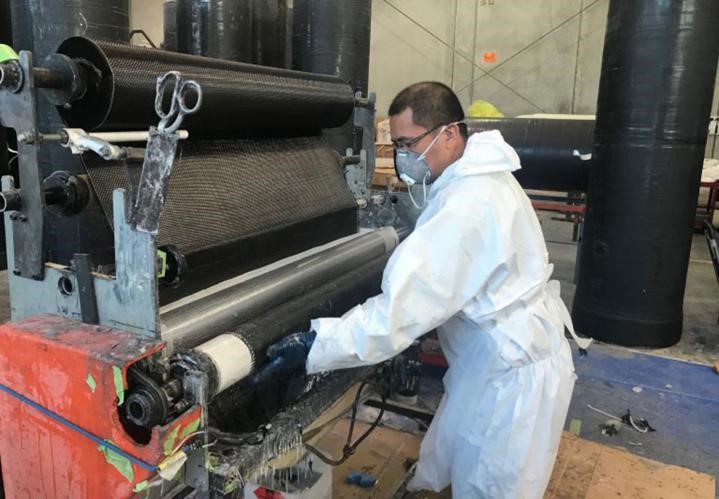Democratising carbon fibre
If you think about Auckland and carbon fibre technology, scenes of the America’s Cup and the industries that surround it spring to mind.
Ventilation tubes in dusty Australian coal mines are probably not your first mental image.
Yet this less than glamorous gear represents the start of a promising new trade, thanks to the ingenuity of Graeme Rivers, founder of North Shore-based Rivers Carbon Technologies, and a Callaghan Innovation Project Grant.
All sorts have come out of Rivers Carbon’s Albany workshop – from the foils for elite America’s Cup yachts to replica chassis for E-Type Jaguars.
But while money may be no object in these high-end industries, the wonders of carbon fibre are generally outside the budget of ordinary businesses.
Until now. Rivers Carbon has come up with a lower cost way of making carbon fibre products for everyday sectors such as construction and mining.
After months of researching cores, cloth types, resins, hardeners and trihydrate mixes, Graeme Rivers developed a ‘cold cure’ method of setting carbon fibre, rather than pressurising and cooking it in an autoclave.
Rivers Carbon settled on ventilation tubing for underground mining as its first application for the new carbon fibre.
 Currently the fibreglass tubes used in the mines are heavy and tend to crack and break.
Currently the fibreglass tubes used in the mines are heavy and tend to crack and break.
Both factors create health and safety issues. In contrast, Rivers’ Premium High Carbon Fibre tubes are light, durable, and can be easily lifted above the shoulder making them far easier to install.
The company exported its first shipment of ventilation tubing to Australia in March and has been producing consistently ever since.
Staff at BHP Billiton Illawarra Coal’s West Cliff mine in New South Wales say they’ve had no injuries to people or breakages since they started using carbon fibre tubing, and the company is now looking at other applications for the material.
“We have a lot of manual handling, a lot of heavy implements, so really we’re looking to find the next level use of carbon fibre,” Health and Safety Manager Peter Rolfe says.
Rivers Carbon is already making wheel hub covers for the motors on giant mining trucks and man doors for mine shaft safety. It’s investigating using the new carbon fibre in everything from prosthetic feet to dinghies to construction beams.
“There’s no limit to where we can go. If something requires strength and it moves, so that weight is an issue, then we can play in that space,” General Manager Stephen Beaumont says.
Automation the next step
Graeme Rivers set up Rivers Carbon in 2004 and did a wide range of innovative small run production such as parts for race cars.
The company attracted the attention of investment firm Lewis Holdings in 2010. “Graeme is quite brilliant in some of the problems that he’s solved through the use of carbon fibre,” Director Dave Tibby says.
The Project Grant from Callaghan Innovation allowed the business to expand its focus and develop a manufacturing process for a cost-effective alternative fibre.
“We wouldn’t have done it, couldn’t have done it without it,” Commercial Manager Ngaio Merrick says. “Once we got the Callaghan Innovation grant we kicked off our R&D in earnest, and that was really exciting,” she says.
The next step for Rivers Carbon is to automate the new process and it’s hoping to employ students under the Callaghan Innovation Student Grant programme to help with the research.
The Project Grant was a great way for a company of Rivers Carbon’s size to access R&D support, Callaghan Innovation’s Business Innovation Adviser Transport and Logistics, Nick Brewer, says.
The company’s technology is unique and difficult to achieve at the right price point, he says. “The key is the core in the middle and it’s hard to make it into a tube. Rivers Carbon has found a process to create the tube using a superlight core,” he says.
Callaghan Innovation looks forward to working alongside Rivers Carbon as the company grows, Nick says.



